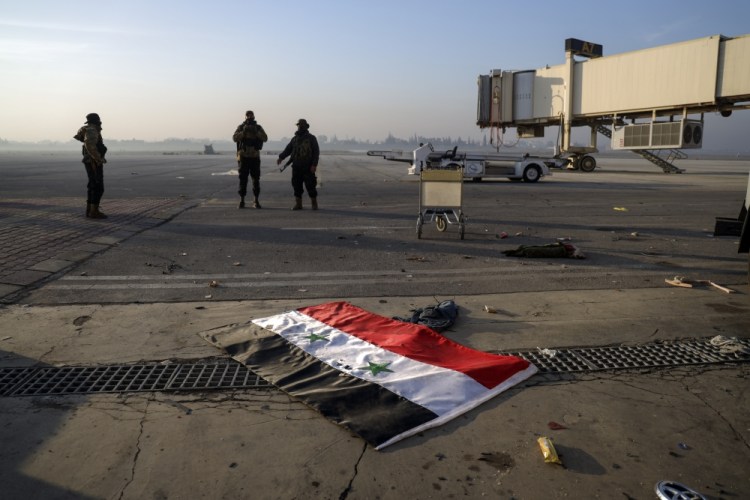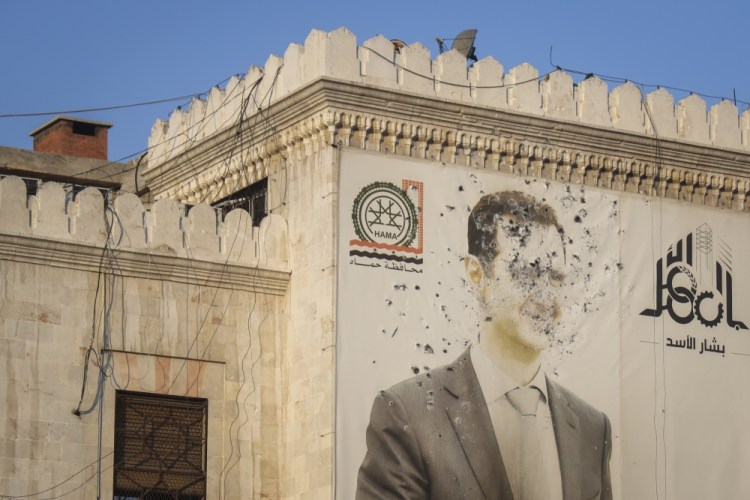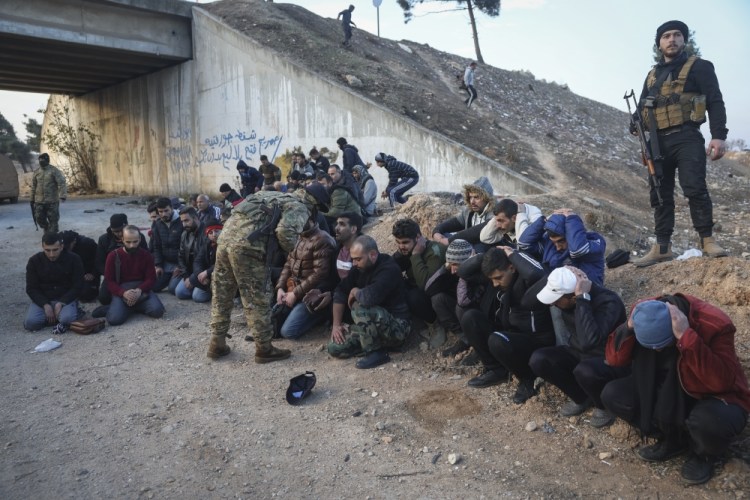His poster once loomed over almost every corner. Family statues stood over busy streets.
Syrian rebel forces said they had entered Damascus on Sunday, dislodging President Bashar al-Assad, whose family has ruled Syria with an iron fist for more than 53 years. The lightning offensive, led by the armed Islamist faction Hayat Tahrir al-Sham, ended a four-year stalemate between Assad and HTS factions based in Idlib province. Rebels gained control of the major cities of Aleppo, Hama Homs and Damascus in just eight days.
Experts credit former al-Qaeda commander Abu Mohammed al-Jolani with recruiting a temporary coalition of fighters that has propelled HTS to unprecedented success.
“What we are seeing now is the outcome of the past few years of training and professionalization of the HTS troops,” said Jerome Drevon, a senior analyst at Crisis Group, who said Turkey had also provided material aid. “They have specialized units for drones, infantry and tanks. It’s much more coordinated than what they could do before.”
Syria’s control map looks far different than two weeks ago, with Damascus — the country’s capital and Assad stronghold — on the brink of collapse.

Nov. 30: The fall of Aleppo
Rebels breached the western limits of Aleppo — Syria’s second city — on Nov. 29, for the first time since December 2016. They moved quickly into the city center, careening through the streets, firing weapons and honking horns, as government forces fled.
As of Nov. 30, video footage verified by The Post showed rebels pacing in front of the international airport and posting selfies on the steps of Aleppo’s 12th-century citadel. A day later, a fighter knelt to kiss the ground in front of a military school as HTS overtook regime territory west of Aleppo.
The Syrian military, backed by Russian fighter jets, responded with a volley of strikes on Aleppo and the surrounding area. However, there have been no further strikes on the city since Dec. 2, according to data collected by ACLED, a U.S.-based war monitor.

Dec. 5: The Fall of Hama
By Dec. 1, rebel forces were pushing south toward the city of Hama, but Assad’s forces managed to hold off the sudden advance.
Over the next five days, the rebel coalition captured nearby towns and positioned themselves at hastily abandoned military installations, video verified by online researchers and confirmed by The Post showed.
Under pressure, Assad ordered an immediate salary increase for conscripted forces, Syria’s state news agency reported on Wednesday. Russian jets continued to strike targets across the province, ACLED data shows.
On Dec. 5, fighters took control of Hama, releasing prisoners from Assad’s infamous prisons. Videos showed long-awaited reunions, as people streamed out of Hama Central Prison — some emerging for the first time in nearly 40 years, following the bloody crackdown on the opposition by Assad’s father in 1982.
Dec. 7: The Fall of Daraa
On Dec. 6, a faction of anti-Assad fighters swept through the southern city of Daraa, waving opposition flags. By nightfall, crowds had converged into a makeshift parade, dragging the remnants of an Assad statue.
Experts described the opposition in Daraa as a mixed coalition of former rebels, including local strongmen and clan figures, who were forced to concede to Assad in 2018.
“Many people have wanted this for a long time, but have been unable to act,” said Aron Lund, a Middle East analyst at Century International. “The events in the north gave them an opportunity to do it.”
After asserting control of the city center, resistance fighters fanned out, some surging north toward Damascus, and others pushing south toward Jordan.
On Dec. 7, Jordanian authorities closed Jaber-Naseeb terminal, sealing off the only passenger and commercial border crossing into Syria, following local media reports of gunshots and fighting at the border.

Ongoing: The battle for Homs
Anti-Assad fighters are moving into the strategic city of Homs — once a center of Syria’s resistance and a critical economic waypoint between gas reserves in the east and the regime’s coastal ports, home to two Russian military bases.
On Friday, HTS commanders announced that they had seized control of areas six kilometers north of Homs. By the end of the day, they were calling on regime soldiers to defect.
“If they overtake Homs, it will sever Damascus from the coast and basically bisect the regime,” Lund said, adding that such a disruption could cue a “death spiral” for the Syrian state.
But the regime’s retreat has continued.
On Saturday, Assad’s forces withdrew from the “T4 Airport,” the regime’s largest military base east of Homs, according to local media. Hours later, HTS said it was advancing into the heart of the city.

Damascus — the last stand
From the north and the south, rebel commanders vowed to continue on to Damascus. Rebel groups closed in on Saturday, overtaking suburb after suburb.
Residents reported shops closing and a shortage of cash in the capital on Saturday. Video verified by The Post showed men toppling a sculpture of Assad in Jaramana, less than 10 miles from the presidential palace.
By the early hours of Sunday morning, Damascus residents streamed into the historic Umayyad Square, just two miles from the palace. Videos verified by The Post showed men climbing on top of an armored vehicle as people played music and raised their phones to capture the historic moment.
A live stream, filmed just before 7 a.m. local time, showed people wandering between slow-moving cars. Bursts of gunfire are audible.
The Foreign Ministry of Russia confirmed that Assad had left the country. His whereabouts remain unknown.
The dictatorship of the Assad family lasted half a century, but collapsed in just eight days after a brutal 13 year civil war.
Imogen Piper in London contributed to this report.
We invite you to add your comments. We encourage a thoughtful exchange of ideas and information on this website. By joining the conversation, you are agreeing to our commenting policy and terms of use. More information is found on our FAQs. You can modify your screen name here.
Comments are managed by our staff during regular business hours Monday through Friday as well as limited hours on Saturday and Sunday. Comments held for moderation outside of those hours may take longer to approve.
Join the Conversation
Please sign into your Sun Journal account to participate in conversations below. If you do not have an account, you can register or subscribe. Questions? Please see our FAQs.